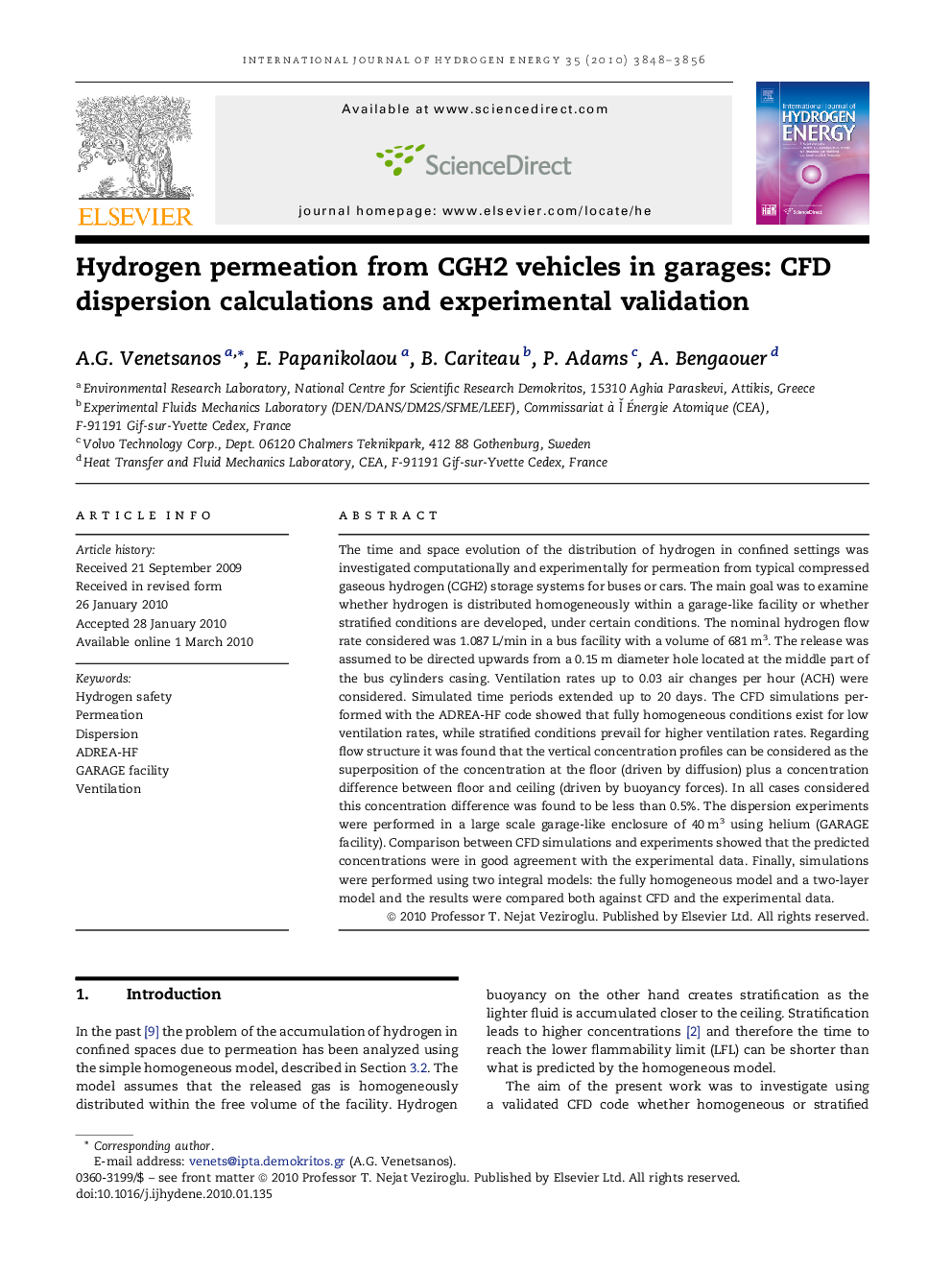| Article ID | Journal | Published Year | Pages | File Type |
|---|---|---|---|---|
| 1282945 | International Journal of Hydrogen Energy | 2010 | 9 Pages |
The time and space evolution of the distribution of hydrogen in confined settings was investigated computationally and experimentally for permeation from typical compressed gaseous hydrogen (CGH2) storage systems for buses or cars. The main goal was to examine whether hydrogen is distributed homogeneously within a garage-like facility or whether stratified conditions are developed, under certain conditions. The nominal hydrogen flow rate considered was 1.087 L/min in a bus facility with a volume of 681 m3. The release was assumed to be directed upwards from a 0.15 m diameter hole located at the middle part of the bus cylinders casing. Ventilation rates up to 0.03 air changes per hour (ACH) were considered. Simulated time periods extended up to 20 days. The CFD simulations performed with the ADREA-HF code showed that fully homogeneous conditions exist for low ventilation rates, while stratified conditions prevail for higher ventilation rates. Regarding flow structure it was found that the vertical concentration profiles can be considered as the superposition of the concentration at the floor (driven by diffusion) plus a concentration difference between floor and ceiling (driven by buoyancy forces). In all cases considered this concentration difference was found to be less than 0.5%. The dispersion experiments were performed in a large scale garage-like enclosure of 40 m3 using helium (GARAGE facility). Comparison between CFD simulations and experiments showed that the predicted concentrations were in good agreement with the experimental data. Finally, simulations were performed using two integral models: the fully homogeneous model and a two-layer model and the results were compared both against CFD and the experimental data.
